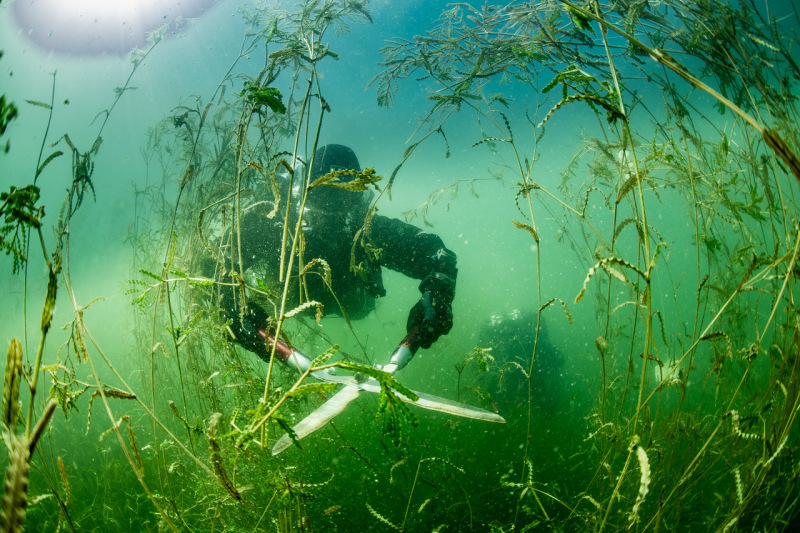
When communities, fishing clubs, divers and environmentalists work together, it helps most, especially the nature!
As an environmental officer, I support a community (lake owners) with underwater photo mapping of aquatic plants. This is done in cooperation with a private environmental verifier office. The water is a 120-hectare, former gravel pond, which is also used as a bathing lake. The water plants grow there sometimes so dense and so high that a bathing operation is no longer possible.
Previously, the plants were torn with steel cables from the underground. Later, they have been removed with a mower over a large area. However, aquatic plants are enormously important, indeed indispensable, for the ecological balance of the lake, the nutrient cycles that are taking place in it, and thus also for the fish. They need light, carbon dioxide and nutrients to grow. The nutrients are mainly phosphates, which also promote the growth of microscopic plankton algae.
Excessive algae growth can turn the lake into a green soup. If, on the other hand, the lake has optimal growth of aquatic plants, it will deprive the water of certain nutrients. The small algae can not multiply so fast and the lake stays clear. In our waters the curled pondweed dies in the summer, sinks to the bottom of the lake and rots. This process creates an enormous oxygen deficit there.
During my mapping dives, I see when the dying of aquatic plants is imminent. This is then the optimal time for a selective and visually controlled hand mowing action. And now the divers come into play. With hedge trimmers, only the plant species that is about to die off and is located in the bathing area is mowed. Since the plants are then still in relatively good shape, they float to the surface and can be easily collected on the lake shore. The nutrients are thus removed from the water and are no longer available for algae growth. If you miss the right time, the dying plants sink to the bottom of the lake and rot there.
Environmental protection also benefits from this selective mowing action by divers, as it is no longer all plants that have been torn out as before (see below: The Importance of Aquatic Plants). The recreation seekers have a free swimming area. The fish, especially the spawning spawners, still find enough plants for breeding and living and the fishing association is happy about that.
Selective hand mowing by divers is in many cases a reasonable cultivation measure. But the connections in the ecosystem of a lake are very complex. Before performing such procedures, a cultivation plan should be prepared by a specialized office or institute.
Your VIT Environmental Officer
Dipl.-Biol. Uwe Scherner
The Importance of Aquatic Plants: